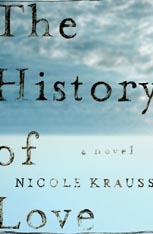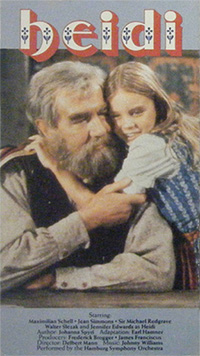Synopsis
Oskar Schell is a nine-year-old boy whose father, Thomas Schell, died in the terrorist attacks on the World Trade Center on September 11, 2001. The novel begins after the tragedy, with Oskar narrating. Since his father's death, Oskar struggles with insomnia, panic attacks, and depression. He often describes the feeling of depression as wearing heavy boots, and deals with this by giving himself bruises. His relationship with his mother has also become strained, particularly as she has started dating a man named Ron, whom Oskar resents for having replaced his father.
One day, in his father's closet, Oskar finds a key in a small envelope inside a vase that he accidentally broke; in the keyshop he finds the name Black and thinks this has something to do with the key. Curious, Oskar sets out on a mission to contact every person in New York City with the last name of Black in the hope of finding the lock that belongs to the key his father left behind, creating a binder with mementos of his journey.
One of the first people Oskar meets is a 48-year-old woman named Abby Black. Oskar and Abby instantly become friends, but she has no information on the key. Oskar continues to search the city. Toward the end of his journey Oskar meets an old man he calls "the renter" because until the point of meeting, Oskar had only heard of the old man's existence from his grandmother who referred to him as the new tenant in her apartment. The reader learns towards the end of the book that "the renter" is actually Oskar's grandfather, who abandoned his grandmother while she was pregnant with Thomas, though Oskar does not realise the connection. [1]
The book spans many months of Oskar's journey, some of which he is accompanied by his eccentric elderly neighbour, Mr. A. Black, and they develop a close friendship. After meeting with a woman named Ruth in the Empire State Building, who has a history of her own with the building, Mr. Black ends his travels with Oskar, who struggles with his departure. He tries to visit Mr. Black again later but finds out he has moved house, presumably to be with Ruth, and is selling his apartment, leaving behind a card for Oskar, reading "Oskar Schell: Son". Eight months after Oskar initially met Abby, he finds a message from her on the answering machine. Oskar had not touched that phone since his father died because his father's last words had been on an identical answering machine which Oskar had kept hidden from his mother. Oskar finds out that Abby called him directly after his visit, saying she was not completely honest with him and might be able to help. Oskar returns to Abby's apartment after listening to this message, and Abby directs him to her ex-husband, William Black. [2]
When Oskar talks to William, he learns that the key once belonged to William's father. In his will, William's father left William a key to a safe-deposit box, but William had already sold the vase at the estate sale to Thomas Schell. Then, Oskar tells William something that he "never told anyone" – the story of the last answering machine message Oskar received from his father, during the attack of 9/11. Disappointed that the key does not belong to him, Oskar then gives William the key and goes home angry and sad, not interested in the contents of the box. Oskar also discovers that his mother knew about his activities the entire time and was contacting everyone with the name Black in New York City. After the first few visits she called every Black that he would meet and informed them that Oskar was going to visit and why. In response, the people Oskar met knew ahead of time why he was coming and usually treated him in a friendly manner.
Resolving to try to move on from his father's death, Oskar bonds with Ron after finding out that he met his mother at a support group after having lost his wife and daughter in a car accident. On the second anniversary of his father's death, Oskar meets with "the renter" and they go to dig up his father's grave. Contemplating on what to put into the empty coffin, "the renter" decides to bury various letters that he had written to his unborn son. Shortly after returning home, Oskar reconciles with his mother and vows to become better and allow for her to find happiness again, and she tells him how Oskar's father lied to her in his last call, telling her that he was coming home, to assure her not to worry over his death. Before going to bed, Oskar takes out his binder and proceeds to rearrange the pages in reverse in an attempt to relive the last few hours with his father and achieve closure.
The novel has a parallel narrative that eventually converges with the main story. This narrative is portrayed through a series of letters written by Oskar's grandfather to Oskar's father Thomas, and by Oskar's grandmother to Oskar himself. The letters written by Oskar's grandfather explain his past in World War II, his first love, and his marriage to Oskar's grandmother. The letters written by Oskar's grandmother explain her past in meeting Oskar's grandfather, the trouble in their relationship, and how important Oskar is to her. Upon learning of his son's death, Oskar's grandfather promptly returns to New York and tracks down Oskar and his grandmother. His grandmother decides to let him live with her in her apartment temporarily, which results in them becoming intimate, and he watches over Oskar from afar before meeting him. Shortly after burying the letters with Oskar, his grandfather returns to the airport where Oskar's grandmother follows him. After discussing the war, losing their loved ones and their marriage, they decide to stay in the airport for a while.
The final pages are a flip-book style animation of a photograph of a man falling from the World Trade Center, derived from a photograph by Lyle Owerko. The animation makes the man appear to fall upwards.
Background
Jonathan Safran Foer's inspiration for his main character came when having difficulty with another project. In an interview, Foer stated, "I was working on another story and I just started to feel the drag of it. And so, as a side project, I got interested in the voice of this kid. I thought maybe it could be a story; maybe it would be nothing. I found myself spending more and more time on it and wanting to work on that". [3] On the challenges of writing a novel in a child's voice, Foer responded, "It's not the voice of a child exactly," adding that "in order to create this thing that feels most real, it's usually not by actually giving the most accurate presentation of it." [3]
Foer combined the character he had been developing with the 9/11-centered plot. He created the story line from his personal experiences and reactions regarding the terrorist attacks on 9/11. Foer was sleeping off jet lag after returning to New York City from a trip to Spain, when he was woken by a phone call from a friend: "He said, 'You have to turn on the TV, a plane has crashed into the World Trade Center.' And then he said, 'I think it's going to be a very strange day.'" [3] In another interview, Foer said, "I think it's a greater risk not to write about [9/11]. If you're in my position—a New Yorker who felt the event very deeply and a writer who wants to write about things he feels deeply about—I think it's risky to avoid what's right in front of you."
Cultural impact
Authors began producing 9/11 novels as early as 2002 as a way of recognizing the tragedy. Jonathan Safran Foer's novel was one of many that confronted the aftermath of the attacks through the eyes of a New Yorker. However, 9/11 fiction is not only a new subgenre, but a new struggle for many authors. Richard Gray stated in his book on 9/11 literature After The Fall, "If there was one thing writers agreed about in response to 9/11, it was the failure of language; the terrorist attacks made the tools of their trade seem absurd." [5] There was a desire to write about the experience, to recognize the individual impact, as well as the greater social impact, while appreciating the mourning of the country, but many authors found it difficult to do so.
Foer utilizes the child narrator in an attempt to connect with that struggle. The struggle of the child to understand the trauma is reflective of the struggle many faced after the trauma of the 9/11 attacks.
Foer's novel was one of the most popular and widely read novels of this post 9/11 fiction subgenre. Because of its great popularity, its message had a greater impact than many novels of its kind. Apart from the terrorist attacks of September 11, the novel also sheds light on the experience of terrible tragedy. Rebecca Miller of the Library Journal claims "Foer nimbly explores the misunderstandings that compound when grief silences its victims." [6] The novel makes sense of and provides a way of moving on from the grief of the specific catastrophe. "Few works of literature have succeeded in drawing lasting meaning, whole or fragmentary, from modernity's string of catastrophes... but Extremely Loud & Incredibly Close is one of them, providing a tool to create understanding of grief and loss." [7]
Critical response
John Updike, writing for The New Yorker , found the novel to be "thinner, overextended, and sentimentally watery," compared to Foer's first novel. He stated, "the book's hyperactive visual surface covers up a certain hollow monotony in its verbal drama." [8] In a review for The New York Times , Michiko Kakutani said, "While it contains moments of shattering emotion and stunning virtuosity that attest to Mr. Foer's myriad gifts as a writer, the novel as a whole feels simultaneously contrived and improvisatory, schematic and haphazard." [9] Kakutani also stated the book was "cloying" and identified the unsympathetic main character as a major issue. The topic of the child narrator is a contentious one. Many critics found the child narrator to be unbelievable and not relatable.
Despite several unfavorable reviews, the novel was viewed positively by several critics. Foer's child narrator was featured in a critical article titled "Ten of the Best Child Narrators" by John Mullan of The Guardian in 2009. [10] The Spectator stated that "Safran Foer is describing a suffering that spreads across continents and generations" and that the "book is a heartbreaker: tragic, funny, intensely moving". [11] "Foer's excellent second novel vibrates with the details of a current tragedy but successfully explores the universal questions that trauma brings on its floodtide.... It's hard to believe that such an inherently sad story could be so entertaining, but Foer's writing lightens the load." [12] Sam Munson, in a review of two novels on catastrophe claimed, "Foer has a natural gift for choosing subjects of great import and then pitching his distinctive voice sharply enough to be heard above their historical din." [7]

















